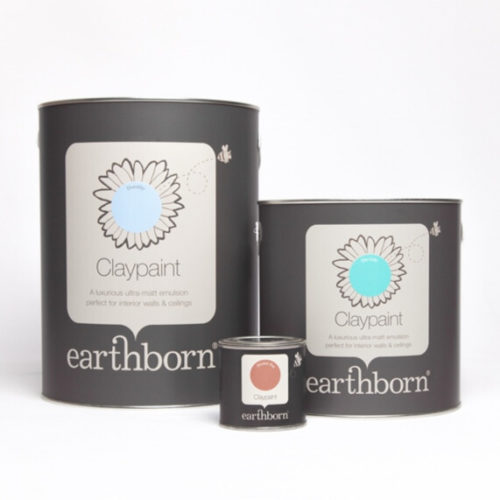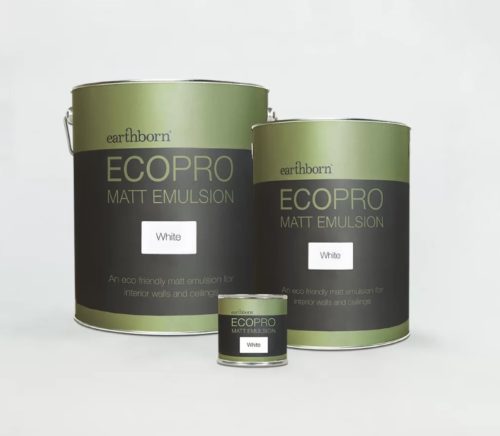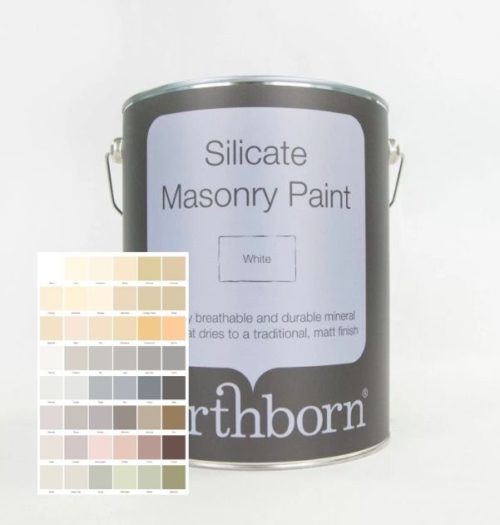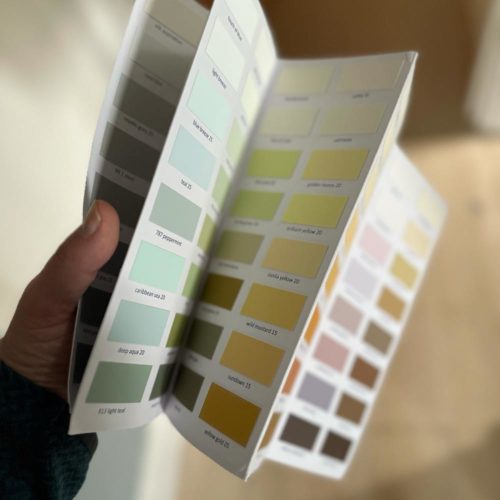Breathable paint has been used in homes for centuries. It helps regulate humidity within the building, allowing moisture in walls and air to escape rather than become trapped. If you live in a heritage property or older home with solid wall construction, you've likely experienced issues with damp walls, peeling paint, or mould.
Today's breathable paints offer the same moisture regulating benefits but with improved performance. The needs of older buildings and eco conscious home designs are met without relying on petrochemicals or sacrificing modern standards of durability and high quality finish.

Auro 555 Natural Emulsion Paint
What Is Breathable Paint?
Breathable paint allows water vapour to pass through its film, facilitating natural moisture regulation within a building. Breathable coatings help prevent damp patches, mould growth, and even damage to the building fabric.
How to Define Paint Breathability
Breathability levels in paint are measured using something called an "Sd value". This is a number that tells you how resistant a material is to water vapour.
The lower the number, the more breathable the paint is. Ideally, a breathable paint should have an Sd value of 0.5m or lower to be effective.
Breathable paints are usually made with natural minerals like lime, clay, or silicates, and they should be free from synthetic plastics or harmful VOCs to offer true breathability.
See Also: What is wall breathability?
Why Use Breathable Paint in Your Home?
If your home was originally built with breathable materials such as lime plaster, exterior lime render, or solid stone walls, breathable paint can be especially beneficial.
In more modern homes, breathable paints can also offer advantages. They contribute to better indoor air quality, help manage condensation, and are ideal for rooms prone to humidity like kitchens, bathrooms, and utility areas.
Eco builds and well insulated homes also benefit, as breathable paints work alongside other vapour-permeable materials to create a healthier internal environment.
Older buildings were never meant to be sealed up, they were designed to promote natural ventilation. Many older buildings have been repaired with cement, and painted with vinyl based paints. This can cause moisture to be trapped behind the paint.
- Flaking or bubbling paint
- Mould and mildew
- Damp stains
- Structural problems over time
Using breathable paint helps regulate moisture naturally, supports better indoor air quality, and protects the fabric of your home.
Where to Use Breathable Paint – Room by Room
Breathable paints can be used in all areas of the home, but their benefits are most pronounced in places likely to suffer from moisture build up.
From living rooms with lime plaster to bathrooms, damp prone cellars, to solid stone or brick walls – here's a guide on making the right paint choice for every surface.
Interior Walls
Breathable paints are ideal for interior walls. They offer a natural alternative to synthetic emulsions and often come in uniquely textured soft, matt finishes that complement any decor.
Try:-
- Earthborn Claypaint – a VOC-free clay-based emulsion which creates a unique matt texture when dry
- Auro 555 – our top selling emulsion, available in 96 amazing colours.
Lime Plaster & Lime Render
Lime plaster is highly porous and breathable and needs a compatible paint to function properly. Breathable options like limewash or mineral paints allow moisture to pass through without damaging the surface.
Top picks:
- Graphenstone Ambient Pro – natural lime paint with excellent breathability.
- Auro 344 – a highly effective lime based paint for interior walls.
Damp Prone Areas
Kitchens, bathrooms, cellars, and basements often suffer from condensation and trapped moisture. Breathable paints help reduce mould growth and allow these rooms to dry out more effectively.
Look for:
- Graphenstone AmbientPro – anti-mould and odour absorbing
- Auro 327 – a simple, breathable matt white for ceilings and low-traffic areas
Exterior Brick, Render, & Masonry
Breathable masonry paint is important for brickwork. Sealing bricks with impermeable paint can cause frost damage and spalling.
Options include:
- Silicate mineral paints – such as Graphenstone GCS Exterior.
- Lime based exterior paints – for softer, historic bricks.
What Are the Best Types of Breathable Paint?
Breathable paints come in several types, each with its own strengths depending on the surface or room you're working with. Here's a breakdown of the most popular types and what they're best suited to.
Clay Paint
Clay paint offers excellent breathability and a soft, natural matt finish with a unique texture. It's perfect applying on lime plaster or any home and is virtually VOC-free, making it ideal for living spaces and bedrooms.
See Also: What is clay paint?
Example: Earthborn Claypaint
Lime Paint
Lime paint is fully breathable and compatible with lime plaster or render. It bonds naturally with the substrate and creates a truly beautiful surface texture. If you are replastering with lime, this should be high on your list to consider.
See Also: What is lime paint?
Silicate Paint
Silicate paints chemically bond with mineral surfaces like brick and stone, making them extremely durable and vapour-permeable. Great for exterior walls. They're also very powerful to use for interior applications, particularly as anti mould paints in moisture prone areas such as bathrooms.
Mineral Emulsion
For a breathable yet modern alternative to conventional emulsion, mineral emulsions offer a balance of performance, washability and eco credentials. Suitable for most rooms.
What Makes a Paint Truly Breathable?
Some paints are labelled "breathable" but still have a high Sd value, meaning they don't actually let much moisture through. Always check the technical data from the manufacturer for:
- An Sd value below 0.5m
- Mineral, lime or clay bases
- No plastic or vinyl binders
FAQs About Breathable Paint
Can I use breathable paint over existing paint?
Yes, in most case you'll be able to paint over existing paint with breathable paint. Just make sure the surface is properly prepared, and check the paint is compatible.
Is clay paint breathable?
Absolutely. Clay paint is one of the most breathable interior finishes available. It allows moisture to pass through and is a highly effective moisture regulator.
Can I use breathable paint outside?
Yes, there are many breathable exterior wall paints available. Silicate paints and mineral-based masonry paints are best for outdoor walls.
Want help choosing the right breathable paint for your home? Contact our friendly team for expert advice about your project or order a free colour chart.






